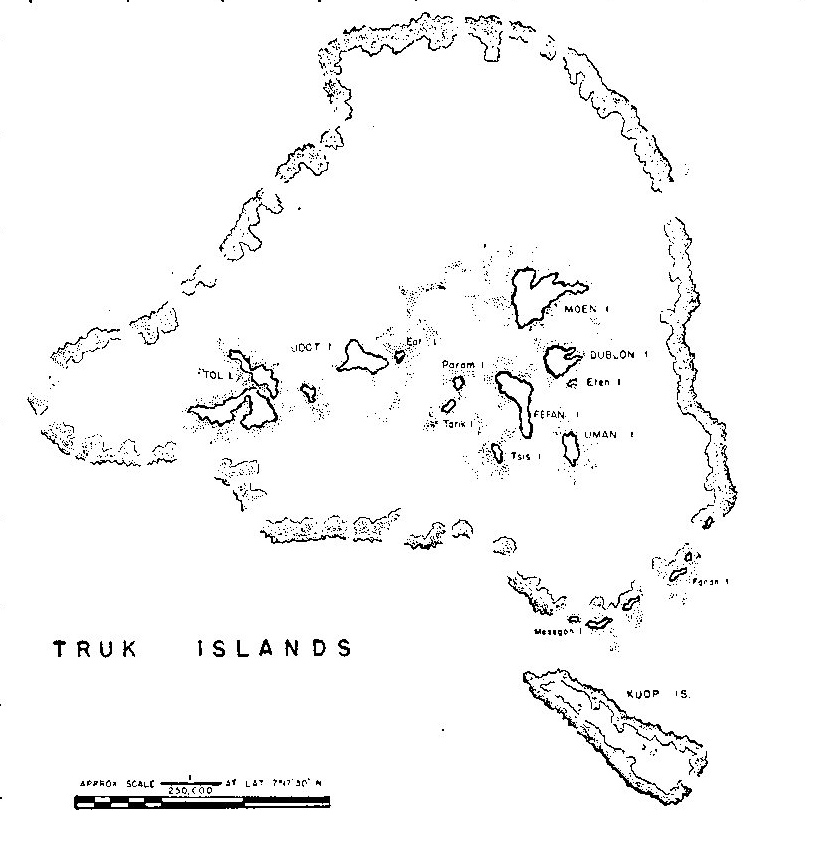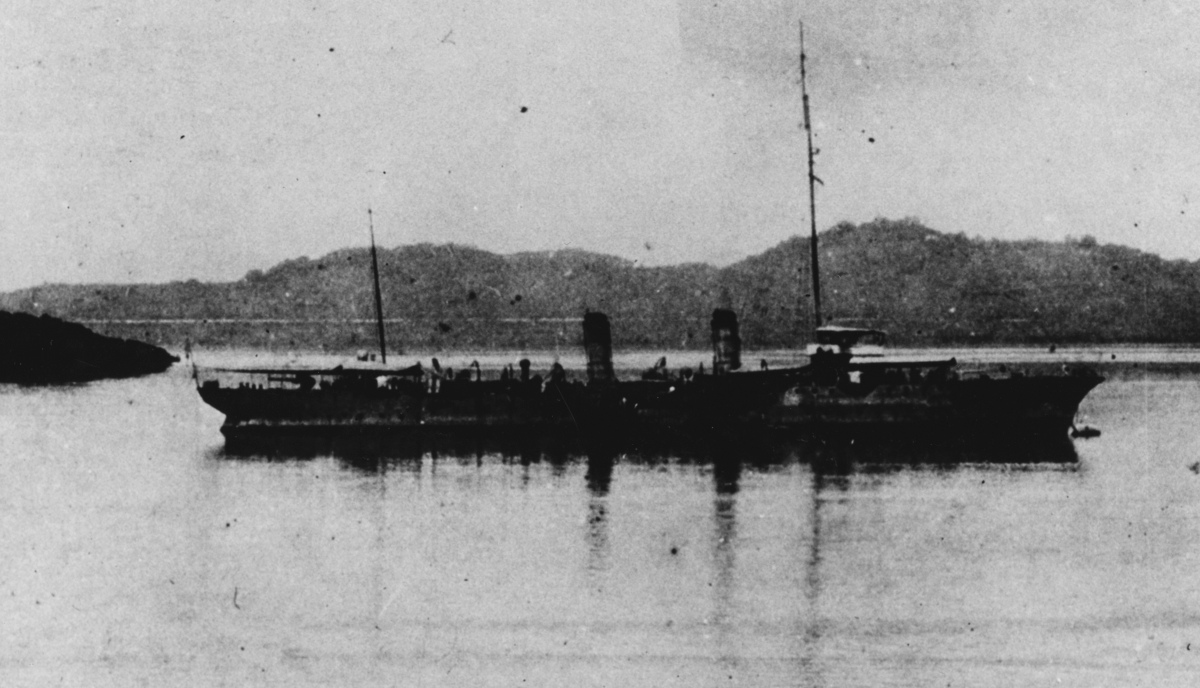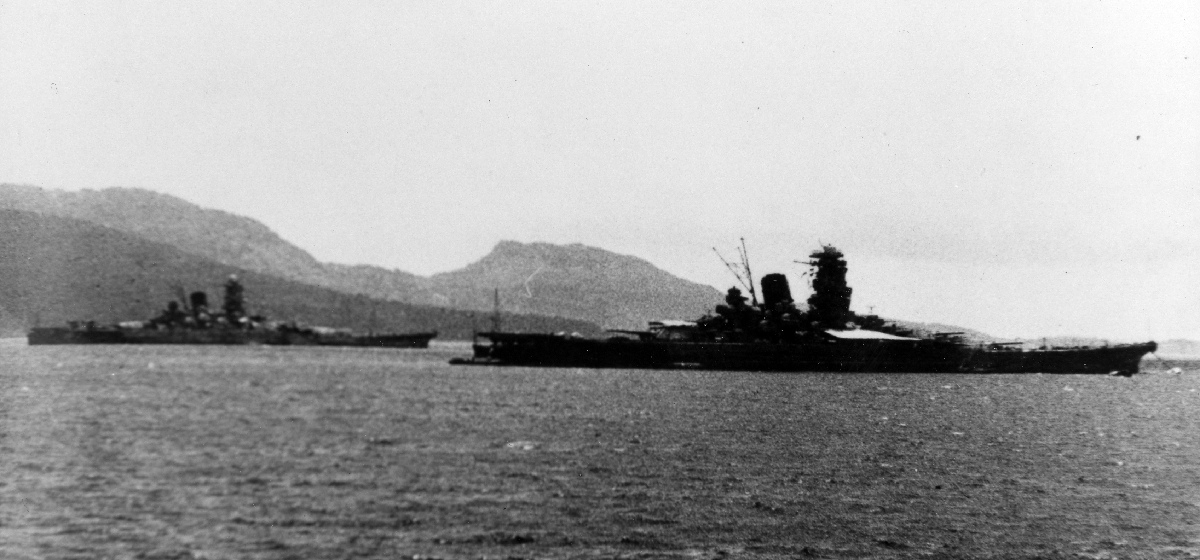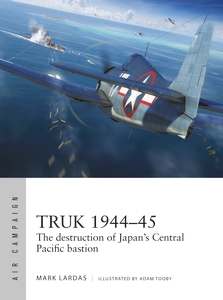On the blog today, author Mark Lardas gives an introduction to the Japanese's operations on Truk Island, for his recent series title Truk 1944-45
Truk. In 1942 the name struck fear into the hearts of Allied planners. Not just the planners, either. Sailors and airmen feared Truk, too. One pilot when informed Truk was the intended target of Operation Hailstone reportedly said he was ready to jump off the carrier into the ocean. It would give him a better chance of survival.
The fear was understandable. Japan occupied Truk in 1914, wresting it from Imperial Germany in The Great War’s opening months. After World War I ended, they inherited the island as a trust territory through the Treaty of Versailles. During World War I and afterwards, they had excluded other foreign nationals from Truk and forbade the indigenous population from leaving it. For a quarter of a century the island had been unobserved and unreported. Who knew what the Japanese had done during that time?

Truk Lagoon in 1940 was no Pearl Harbor or Gibraltar. It was, however a superb anchorage with formidable natural defenses. (USAF)
Based on those fears, the US considered Truk “Japan’s Pearl Harbor,” imagining facilities as extensive as those in Oahu. Britain and Australia called it “the Gibraltar of the East,” as fortified as the Rock controlling the passage between the Mediterranean and the Atlantic.
British, Australian, and US intelligence organizations all assumed the Japanese had built a formidable and fortified naval base at Truk. It was inevitable. Truk, a coral atoll surrounding a drowned mountain, had one of the finest harbors in the Central Pacific. A coral reef 140 miles in perimeter enclosed a 50 by 30 mile lagoon. It had three to five easily defended entrances. In its center, rose mountain islands with peaks reaching over 1400 feet from the lagoon’s surface. Their 36-odd square miles provided space for all manner of installations: fuel depots, warehouses, magazines, ship repair facilities, defensive gun emplacement, and airfields.
Allied intelligence knew what Japan could have done at Truk. They understood the atoll’s strategic importance. Heavy guns placed in fortified positions on the central islands would make the atoll virtually impossible to invade successfully – by 1930s standards. Warships with guns big enough to destroy dug-in batteries lacked the range to reach the central islands. The reefs fringing Truk Lagoon combined with inevitable minefields would see to that. But Japanese guns on the central islands would easily reach landing craft approaching the barrier islands, whose capture was a necessary first step in seizing the atoll.

IJN Yodo at Truk, either during World War I shortly after Japan captured Truk or the early 1920s. (USNHHC)
Reality was far different. Through 1939 Truk was merely a fleet anchorage for Japan, rarely visited through the 1930s. There was only one port facility, at Dublon. Prior to 1939, Dublon contained docks with port facilities and a seaplane base capable of housing up to 50 aircraft. None of its piers were large enough to accommodate large ships, nor were there enough cranes to handle large quantities of stores. Cargoes had to be transferred between ship and shore aboard barges and sampans.
Dublon had only six fuel storage tanks with a capacity of 49,000 tons, installed prior to December 1941. A single pier was equipped to handle fuel; it could only accommodate fuel barges. There were only three; one held 500 tons of fuel, a second could transfer 200 tons and the third 50 tons. Frequent resupply from tankers was necessary and the process of fueling ships and refilling the storage tanks slow. Fuel had to be lightered between ship and shore using fuel barges.

Yamato (left) and Musashi (right) moored in Truk Lagoon some time in 1943. Even then, Truk was more of an anchorage than a fortified port (USNHHC)
The facilities sufficed to service the small Japanese administrative center there and no more. It could fuel the odd visiting warship, but a fleet had to bring its own fuel with it, and refuel from tankers. That was simple enough in Truk lagoon’s sheltered waters. There were no defensive guns at Truk before 1940.
It was not that Japan was unwilling to violate treaties against fortifying Truk. It was that they could not afford to fortify it. As industrialized nations went, Imperial Japan was poor. Of the major powers involved in World War II, only Italy had a smaller economy. Japan could build a large fleet or fortify its possessions, but could not afford both. It chose a large fleet. Fortress Truk was fabulous – it was a fable.
Only after World War II started in September 1939, did Japan begin upgrading Truk. A 2500-ton floating dry dock, was sent from Japan in 1941. A submarine base was added, including one to three submarine tenders. Repair ships and a crane ship were stationed at Dublon. Yet shore installations could repair no more than seven ships at a time: two destroyer-sized ships (up to 2000 tons) and five 600-ton ships. Larger ships were out of luck. After 1941 a supply center was added on Fefan, and torpedo boat bases built on Moen, Uman and Tol. Long distance warning radars were installed on Moen, Fefan, and Tol, and there was a radio direction finding station on Ulalu.
Japan built four airfields on Truk between November 1941 and February 1944, all run by the Imperial Japanese Navy. The first was barely completed in time to support the invasion of Rabaul in February 1942. The airfields had extensive maintenance facilities. One, on Eten, had revetments, aircraft repair and maintenance shops. Dublon had a major maintenance installation for seaplanes. Truk was home to the 104th Air Arsenal, an aircraft assembly and repair organization which provided logistics support for most of Japan’s southeast Pacific theater.

Aerial reconnaissance photo of Truk, taken 4 February 1944. Eten Island and its airfield is in the center, Dublon with its port at bottom left, and Fefan lower center (USNHHC)
Ultimately, it was those airfields, not its natural defenses or its utility as a harbor that made Truk important. With the airfields operational Truk blocked the Allies’ road to Tokyo. Once neutralized they could be kept neutralized .Then Truk could be bypassed. But in January 1944, Truk’s air garrison was too strong to be eliminated by unescorted long-range bombers. Something else was needed. Operation Hailstone was the answer. A carrier raid that dwarfed Japan’s Pearl Harbor attack, it would sweep across Fortress Truk in February 1944, the opening shot in a campaign to neutralize Truk.
Enjoyed today's blog post? Truk 1944-45: The Destruction of Japan's Cental Pacific Bastion is out now! Availabel to order from our website here


Comments
You must be logged in to comment on this post. Click here to log in.
Submit your comment